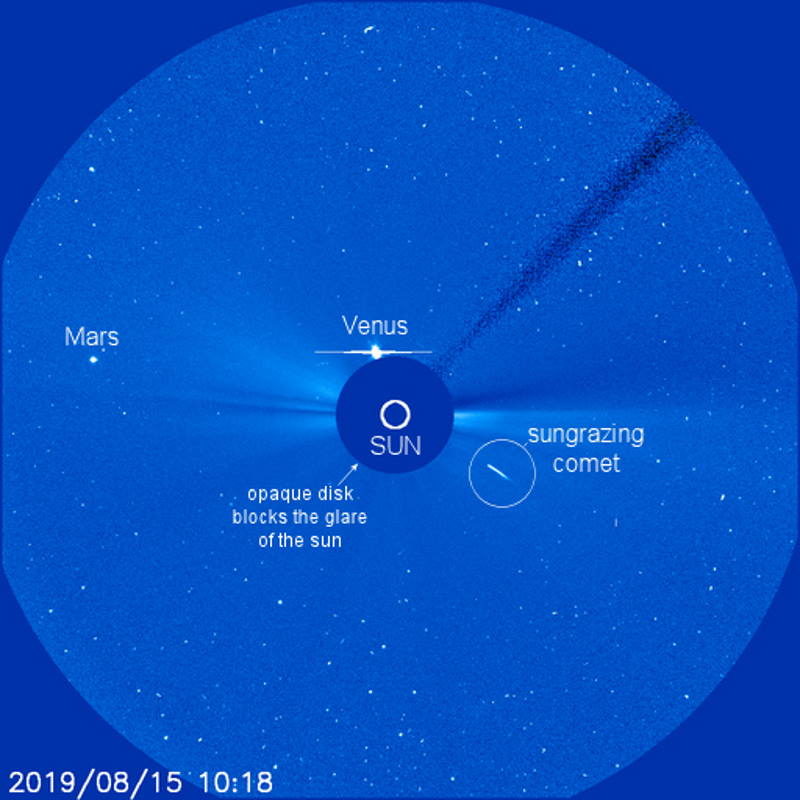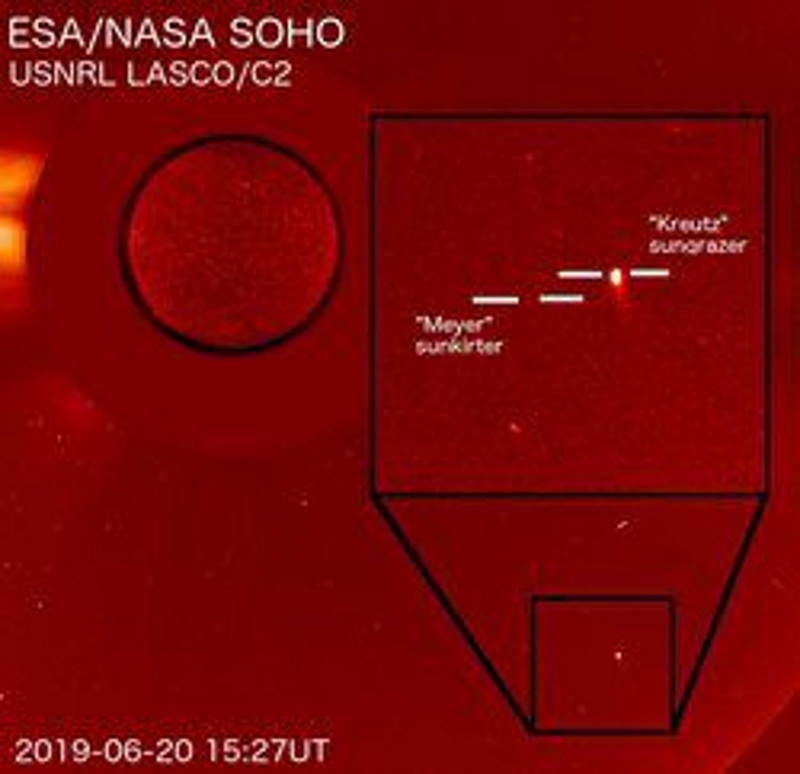
Yesterday (Aug. 15), the Solar and Heliospheric Observatory (SOHO) watched a comet meet its demise as the dirty snowball dove directly into the sun, according to Space Weather astronomer Tony Phillips.
In the video captured by SOHO, you can see a number of objects zooming around the sun, which is blocked by an opaque disk to reduce glare. Seemingly right on top of the sun is Venus, which is bright and easy to spot. Left of center and not quite as bright as Venus, you can also see Mars. Just about 10 seconds into the video, the sun-bound comet suddenly becomes obvious and easy to detect.
Staying on course, the comet continues to head directly for the sun, where it is charges through the sun's atmosphere and is ultimately destroyed (though, of course, you can't see that in the video). This comet is most likely a Kreutz sungrazer, according to Phillips.
Kreutz sungrazers are an interesting group of comets as there is no official definition for them. They have been observed for hundreds of years and were studied by Heinrich Kreutz in the 1880's and 1890's. These comets are thought to be fragments derived from a giant, ancient comet.

Incredibly, over half of all known comets have so far been discovered by the Sungrazer Project, according to the project website. Discoveries of new comets can help scientists to study comet orbits, comet composition comet evolution and more. The discovery of sungrazers like the one spotted in this video can additionally support scientific studies of the sun.
Thousands Of Sungrazing Comets Revealed By Orbiting Observatories (2012)
Follow Chelsea Gohd on Twitter @chelsea_gohd. Follow us on Twitter @Spacedotcom and on Facebook.



Reader Comments
to our Newsletter